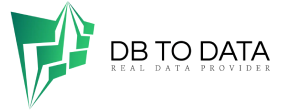All customers should be treated equally, right? Sure, but only after they convert. Before that, those
considered as Ideal Customer Profile (ICP) can be given priority in the sales team’s attention.
The reason is this: lead generation , as we call potential customers, is becoming more automated
every day and benefiting from solutions that help qualify them.
Companies are therefore creating larger lists of qualified leads that, to varying degrees, are more or
less aligned with their product differentiators and business values .
So why not “choose” to work first with those your company would like to help and who, at the same
time, offer the greatest chance of success?
This is one way to look at using ICP, as it not only identifies opportunities that require less sales
effort, but also allows you to evaluate which ones are more likely to be retained .
It’s like seeing fish in the river when we want to fish. However, some want to get into the boat without
even having a lure to attract them. It’s the perfect match between the company’s product or service and the customer’s needs and purchasing potential.
The question that arises is: can my business find better opportunities among the leads it generates?
The answer is yes, and in this content, we will show you how to find the ideal customer profile and
how you can use it in your marketing and sales strategies.
What is ICP or ideal customer profile?
These are the initials for Ideal Customer Profile uae telegram data and are used to name the profile
of customers who have the characteristics and the right problem to be solved
satisfactorily by the solution that your company offers.
It represents a profile of an account, rather than a buyer, a company’s purchasing decision maker or
an end user.
ICP is a widely used tool by companies that use Account Based Marketing (ABM). Here, the
acquisition of new customers is based on specific and well-segmented groups that can be brought
together in a common account.
That is, the company and its sales teams can be divided into different segments, increasing the level of
knowledge in each of them.
The concept of ICP seems similar to that of buyer persona or target audience , isn’t it? So, it’s best to
see what the differences are between them with the help of some concepts and examples.
What are the differences between ICP, buyer persona and target audience?
There are many terms that ultimately nigel farage net worth refer to the same thing: a company’s
customers . The difference lies in the way these concepts are used and, of course, in the accuracy of
their data. Let’s look at each of them.
Target audience
This is a broader perception of who or what type of company wants to conquer your business, but
without a lot of details to drive the strategy .
That is, it is a segment of potential clients identified from behavioral, demographic and
socioeconomic information compatible with commercial products or services.
A company selling student management software for a gym, for example, might target its audience as
follows: gyms or fitness centers with 500 or more students in the Southeast, with monthly revenue of more than $25,000.
Ideal Customer Profile (ICP)
The ICP is more focused on sales and, with b2c phone list its information that complements that
provided by the target audience, allows communications and approaches to be more aligned with the
needs and reality of the leads.
In this case, the same company could define its ICP as follows: crossfit academies in Bogotá, aimed at
women, with 500 students or more, monthly income of US$25 thousand and potential to become
franchise chains.
Note that in addition to existing information about the target audience, the ICP provides additional data that helps customize approaches such as:
- segmentation adopted;
- commercial structure or capacity;
- marketing performance;
- market maturity.
Establishing business contact with such data allows us to resolve the pains and needs of our lead with
much more confidence and certainty that there is a connection with the solutions that the company
has to offer.
In addition to that, speaking directly with the person who has the authority to make the decision is very important. This is based on the definition of an ideal client, which considers:
- who makes the decisions;
- What is your position and relationship to your academic training, for example: a doctor in charge of a clinic or hospital;
- what is the company’s segment;
- technologies, social networks and systems used by the lead , both the company and the decision maker;
- participation in events;
- number of subordinates;
- working time in the organization;
- among other issues.
Person
The persona is a fictional representation based on real information about a company’s customers.
Therefore, it uses both its basic statistical data and elements that would improve its perception of the company’s product and its differentials.
It has a greater focus on marketing actions . That is, while ICP allows the company to identify who it wants to talk to, the buyer persona helps to build content and arguments that best suit them.
In this way, the person arrives at a time when the company needs to know how to position itself and relate to its audience and this applies to any stage of the customer journey, whether they are getting to know the organization or after sales.
Buyer Persona (BP)
And what about the buyer persona? It represents the ideal buyer, which, in comparison, looks a lot like ICP, doesn’t it?
The difference, however, is how these two references are formed and how they are used. ICP is used as a filter in lead generation , i.e. to find the best sales opportunities at the mouth of the sales funnel .
The buyer persona, on the other hand, is the result of the statistical and behavioral study of the company’s buyers who have already been satisfied and loyal .
From this parameter, BP is used to personalize approaches, services, channels and content at different stages of the Customer Journey .
Therefore, in addition to ICP information, the buyer picture can be supplemented with data from current customer satisfaction surveys , behavioral analysis and consumption statistics, as well as the history of how they converted and the marketing strategies that were used to do so.
When evaluating their concepts and applications, it becomes clear that they all contribute to a common purpose: optimizing the sales cycle . It is also clear that the ICP and the buyer persona together are the most efficient duo to capture and filter sales opportunities, isn’t it?
But if Marketing generally comes before Sales, why does ICP come before defining the buyer persona?
This is what we will explain to you below.

